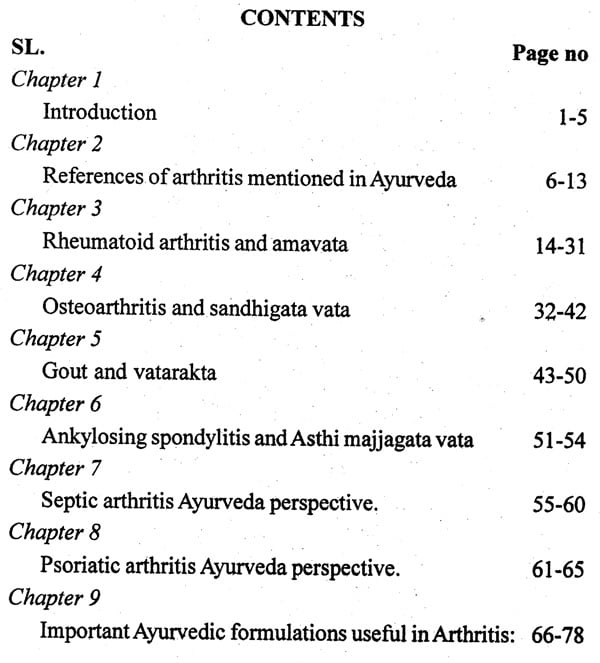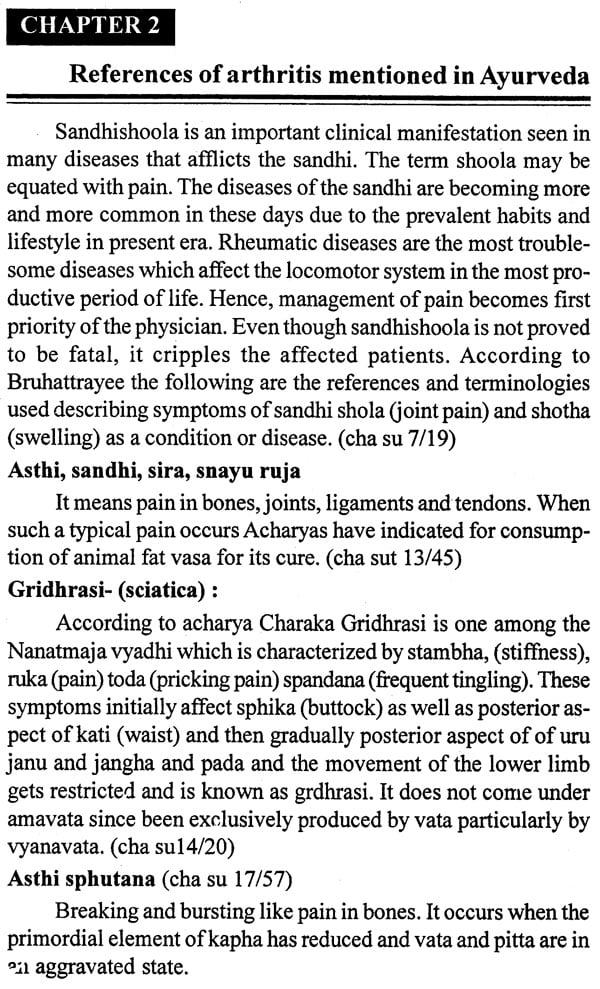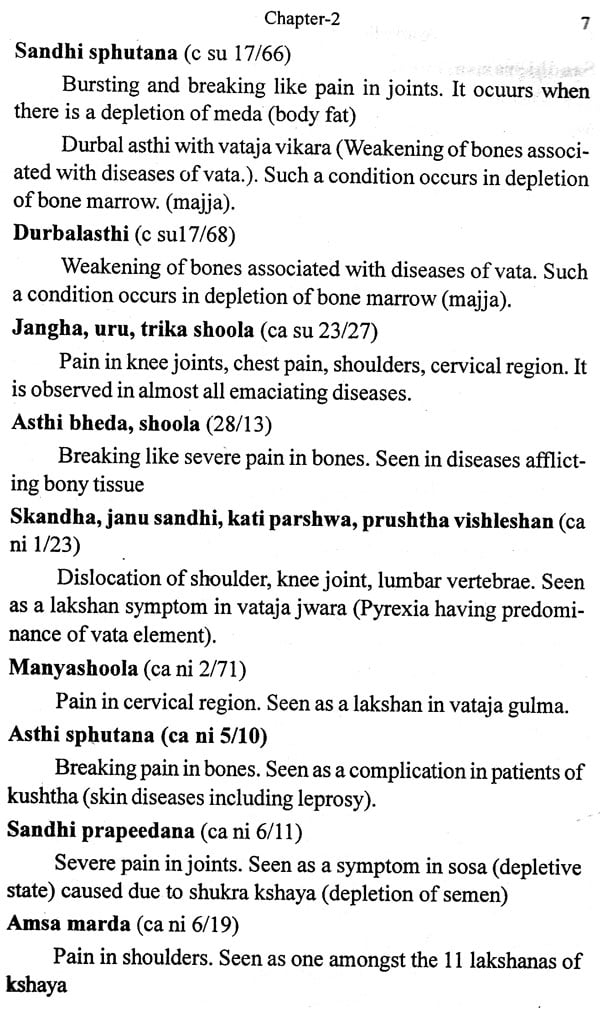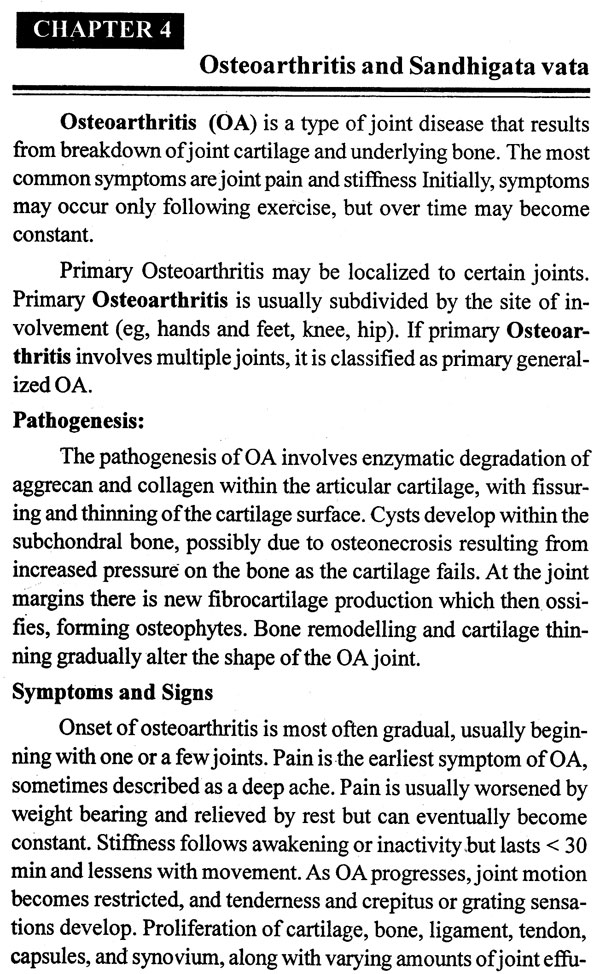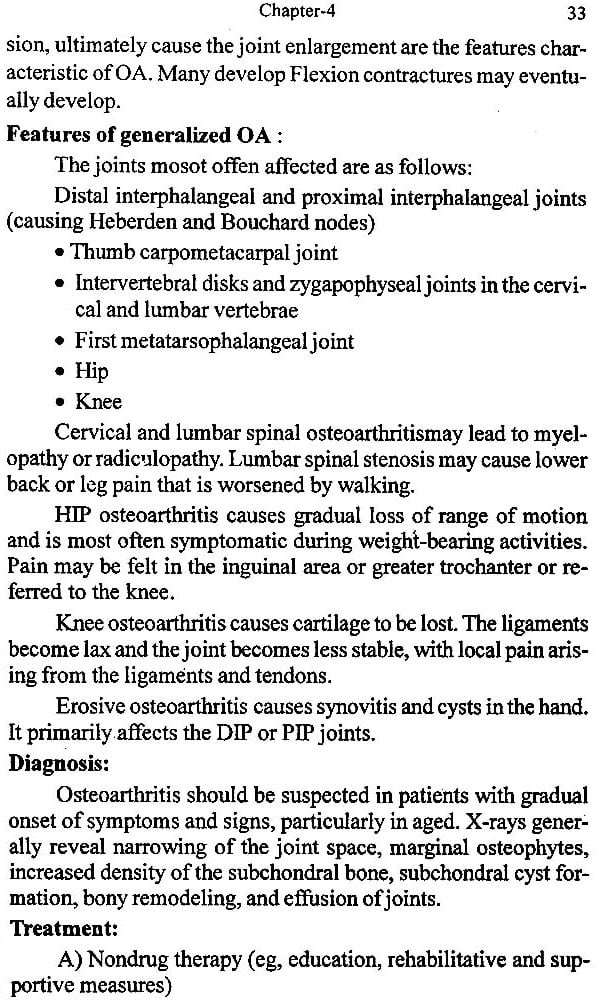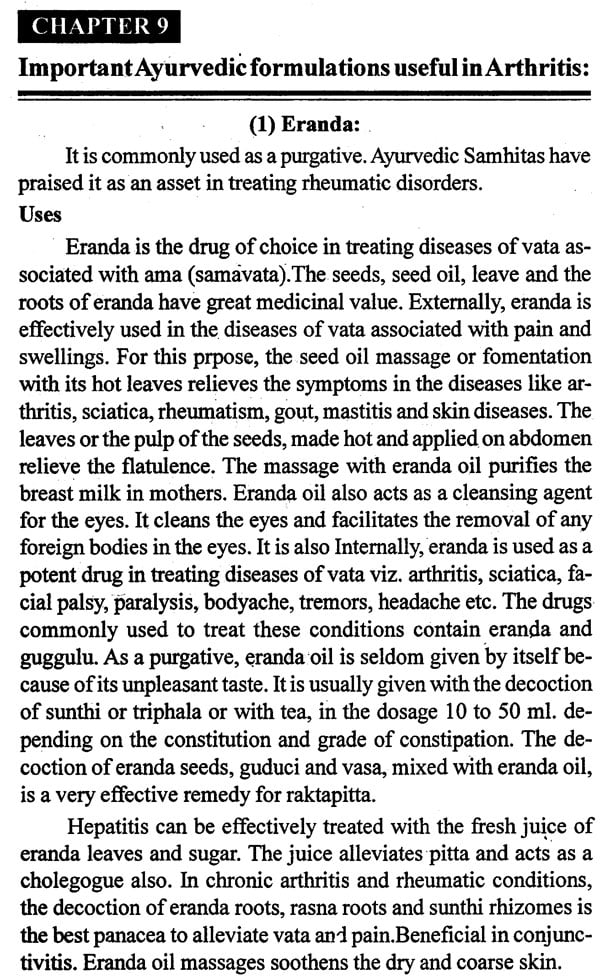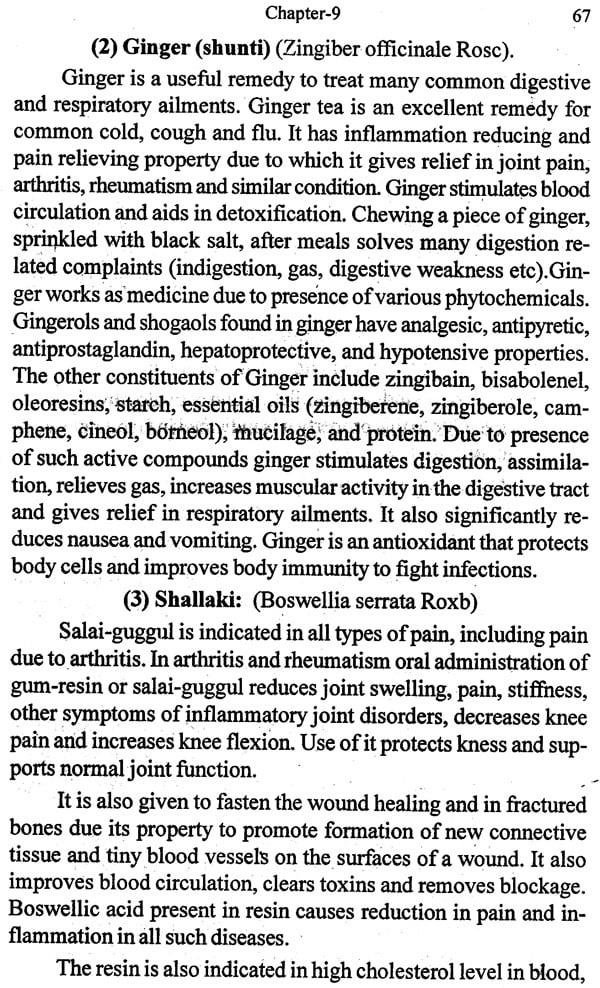
Ayurvedic Perspective of Arthritis
Book Specification
| Item Code: | NAQ973 |
| Author: | Dr. P. Srinivasarao |
| Publisher: | Chowkhamba Sanskrit Series Office |
| Language: | English |
| Edition: | 2019 |
| ISBN: | 9788170805014 |
| Pages: | 84 |
| Cover: | PAPERBACK |
| Other Details | 8.50 X 5.50 inch |
| Weight | 770 gm |
Book Description
Vast knowledge of Ayurveda detailed in Dinachraya and Rutucharya envisaged for the prevention of diseases. The vital homeostasis of the body is maintained by following these principles. But in the present century human beings with their changing life styles by means of dietetic and behaviour pattern played a major role in the manifestation of several disorders including Amavata. Dinacharya and Rutucharya advocates about selection of food, time of consumption, the way of intake, in accordance with the season the changes to be adapted both in food and the way of living. Not only are these but also the righteous ways in the form of Sadvrutta elaborated to overcome both physical and mental diseases.
Vagbhata explaiing Ama states that due to the diminution of agni the first dhatu namely rasa is not formed properly and the anna rasa (Food essence) undergoes fermentation and or putrefaction being retained in the amashaya (Stomach) - this state of rasa is ama. So the improperly digested rasa is Ama. The term ama possesses a unique significance and constitutes the most important causative factor of a many number of diseases especially of Amavata and it may be correlated with group of joint diseases comparable with Rheumatoid arthritic a group of diseases which has no specific medical management in any type of therapeutics and the scopes of these therapeutic measures are limited even after extreme advancement of modem science.
Depending on the pathogenesis of Ama it produces acute conditions like Visuchika, Alsaka, Vilambika etc., to the chronic disorders like Amavata, Grahani and Amatisara etc. In Amavata, Vata as a Dosha and Ama are chief pathogenic factors. Since they no contradictory in nature treatment becomes difficult to combat two opposing conditions. Vitiated Dosha occupy Shleshma Sthana (Asthi & Sandhi) results in painful disease "Amavata". The disease is characterized by various features like Sandhishoola, Toda, swelling, inability of joint movements etc. It is mostly the disease of Madhyama Roga Marga and chronic in nature.
Amavata is a rheumatological disease mentioned in Ayurveda since the period of Madhavakara (16th century A.D.) under the category of Vata-Kaphajadisorders.
The clinical presentation of Amavata closely akin to rheumetological disorders known as rheumatoid arthritis (R.A.), which also having similar on clinical features like pain, swelling, stiffness, fever, redness and general debility. Hence Rheumatoid arthritis also been explained in detail in this book.
Historical review : The reference of Amavata is not found in Vedas. However we find the term Amaa nd Vata has been described separately. In Atharvaveda Sandhi Vikrti is described. Which is said to be caused by Sleshma Vikriti and claimed to cure with prayers.
The term Ama has been used in various synonyms like
`Amayatham' or `Amayame.
Though Amavata is not described in Caraka
Samhita in a complete chapter form however the features of Amavata comparable with kaphavritta vyana described in chapter "Vata Vyadhi.
The chief pathogenic factor causing the disease i.e.,
The treatment of sharirgata Ama explained by Charaka in Grahani Chikitsa is almost similar to that of Amavata
Chikitsa described by Chakrapani in Chakradatta (Ch.Chi. 15/75).
Detailed description of aetiology, pathology, clinical manifestation and chikitsa pertaining to Ama Pradoshaja Vikara mentioned in Charaka Viman sthana gives a hint about the methods of approach of treatment in the disease Amavata.
**Contents and Sample Pages**
